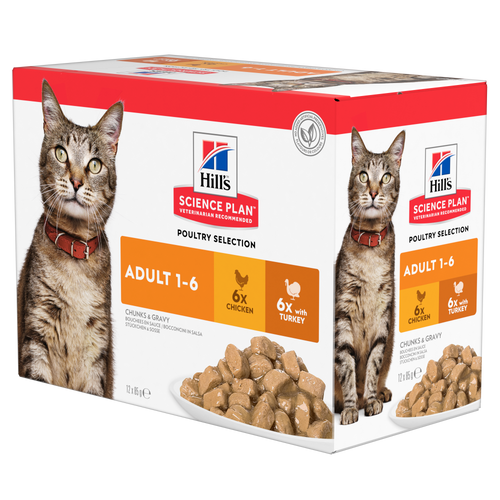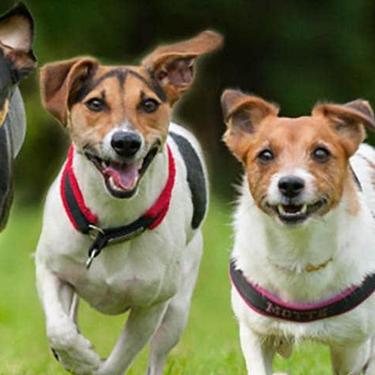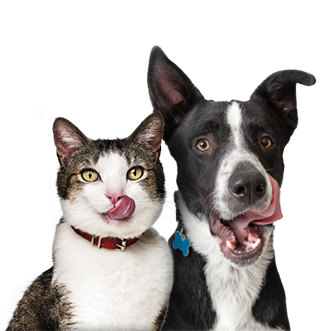
-
Find the right food for your petTake this quiz to see which food may be the best for your furry friend.Find the right food for your petTake this quiz to see which food may be the best for your furry friend.Featured products
 Mature Adult Dog Food
Mature Adult Dog FoodHill's Science Plan Mature Adult Multipack Wet Dog Food with Chicken & Beef are complete premium pet foods for mature adult dogs from 7 years. Your dog will love these deliciously smooth and savoury minced loaves, formulated to deliver the appropriate amount of energy to support the needs of adult dogs.
Shop Now Puppy Food
Puppy FoodHill's Science Plan Puppy Multipack Wet Dog Food with Chicken & Beef are complete premium pet foods for growing puppies from weaning until 1 year old and for pregnant and nursing dogs. Your puppy will love these deliciously smooth and savoury minced loaves, formulated for balanced nutrition and overall health.
Shop Now Adult Wet Dog Food with Beef
Adult Wet Dog Food with BeefHill's Science Plan Adult Multipack Wet Dog Food with Chicken, Beef & Turkey are complete premium pet foods for adult dogs from 1 year. Your dog will love these deliciously smooth and savoury minced loaves, formulated for balanced nutrition and overall health.
Shop NowFeatured products Mature Adult Wet Cat Food with Chicken
Mature Adult Wet Cat Food with Chicken
Tender chicken chunks in gravy for mature adult cats. Made with easy-to-digest ingredients, high-quality protein for lean muscle maintenance and antioxidant vitamins C+E for optimal health.
Shop Now Light Adult Multipack Wet Cat Food with Chicken & Ocean Fish
Light Adult Multipack Wet Cat Food with Chicken & Ocean FishTender chicken chunks in gravy for cats, with L-carnitine and fewer calories for ideal weight management. Packed with high-quality protein, omega-6s, and vitamin E for shiny fur and healthy skin.
Shop Now Adult Multipack Wet Cat Food with Beef, Ocean Fish & Chicken
Adult Multipack Wet Cat Food with Beef, Ocean Fish & ChickenTender chunks in gravy for cats, with high-quality protein to maintain lean muscle. With vitamin E and omega-3s & -6s for healthy skin and balanced minerals to support healthy vital organs.
Shop Now -
Dog
- Dog Tips & Articles
-
Health Category
- Weight
- Food & Environmental Sensitivities
- Urinary
- Digestive
- Joint
- Kidney
-
Life Stage
- Puppy Nutrition
- Adult Nutrition
- Senior Nutrition
Cat- Cat Tips & Articles
-
Health Category
- Weight
- Skin & Food Sensitivities
- Urinary
- Digestive
- Kidney
-
Life Stage
- Kitten Nutrition
- Adult Nutrition
Featured articles Show some love with wet foods: a great choice for pets with health issues
Show some love with wet foods: a great choice for pets with health issuesShow some love with wet foods: a great choice for pets with health issues.
Read More The Incredible Science Behind Your Pet's Microbiome
The Incredible Science Behind Your Pet's MicrobiomeLearn what your pet's microbiome is, how it contributes to your pet's gut and overall health, and why nutrition is important in maintaining healthy microbiomes.
Read More The Right Diet For Your Pet
The Right Diet For Your PetIn people, the right diet is very important. If you are eating the wrong way for your metabolism, activity level, age and lifestyle you could end up with health issues.
Read More -


Lots of owners worry about the weight of their pet - is it ideal, are they too fat or too thin? It’s a really good thing to be aware of. Obesity can shorten life, cause illnesses such as diabetes and joint disease and impact the quality of life of your pet too. Being too thin or underweight is usually more worrying. If you weigh your dog or cat regularly it’s an excellent way to pick up changes in both directions and either correct their rations, change foods (always talk to your vet before changing foods) or, most importantly, catch any disease as early as possible. Thyroid problems and diabetes are two of the diseases that can cause weight gain and loss. In this article we are going to look at diabetes. You can read about thyroid problems here.
Diabetes is a disease where the sugar level in the blood is too high and the cells in the body that need that energy can’t access it. Dogs and cats tend to be pretty different when it comes to diabetes. Let’s look at cats first.
Diabetes in cats.
Diabetes in cats is much more common in obese and older cats. A hormone called insulin is produced by the pancreas and is what helps transport sugar from the blood into the cells. In most diabetic cats the body produces enough insulin to start with but the cells do not respond normally to it and as a result, the blood glucose can’t be transported into the cells. The pancreas tries its best to make up for this by producing more insulin but eventually becomes exhausted and insulin levels drop too low so the situation gets worse. While obesity is the most common cause of diabetes in cats, it can also be caused by diseases like Cushing’s Syndrome and acromegaly and by certain medications like progestins and corticosteroids.
The most common signs of diabetes are drinking and urinating more than normal and weight loss even though your cat may be eating well. This is why even if your cat was overweight to start with they lose weight and may become too thin if not diagnosed. Your vet will need to do a series of blood tests to see if your cat always has high blood sugar. They might also ask you to do some skin-prick blood tests at home. If you can do this it is a much better way to know if the results are true. Cats tend to get quite stressed at the vet’s and this can falsely raise their blood sugar. If you can do the tests at home it can really help and it’s easier than you might imagine.
The first thing your vet might want to do is start insulin treatment and also it’s important to stop the uncontrolled weight loss. You will need to do insulin injections at home. Lots of owners worry about this but talk to your vet before you start to panic too much. Lots of cats tolerate it really well. Changing your cat’s food to a dietetic food for diabetes and/or weight loss is also really important. Your vet will work out the right ration either to stop the weight loss if it’s dangerously fast, or, if your cat is stable but still overweight, gradually reduce their weight. The right nutrition in cats can sometimes even reverse the disease.


Tasty Tips
Young pets may need several visits in their first year for vaccinations. Adult pets generally benefit from annual check-ups, while senior or special-needs pets might require more frequent visits.
Diabetes in dogs.
Diabetes in dogs tends to be because of a lack of insulin production. This is usually because the immune system, for reasons we often don’t know, starts attacking and destroying the cells that make the insulin. These days, sadly, we are also seeing more dogs with obesity-related diabetes because so many animals are overweight.
The common signs, of drinking and urinating more than usual, and weight loss, are the same in dogs as in cats and they will also need blood tests and insulin injections to get the condition under control. Nutrition is important in diabetic dogs too. For the obesity-related cases, as with cats, you may find that you can reverse the disease. While this is not the case for the dogs with the immune problems, nutrition can still help keep them stable. We usually use a higher fibre food to keep the digestion steady and control the amount of glucose or sugar entering the bloodstream. Never change your dog’s food without talking to your vet. If your dog is underweight this must be corrected before high fibre is used.
Does it matter?
Yes it does. Hyperglycaemia, the medical term for high blood sugar, is very dangerous long term. If diabetes isn’t treated it can lead to multiple medical problems and, most critically, DKA (diabetic ketoacidosis). DKA is a medical emergency and can cause vomiting, dehydration, collapse, coma and even death.
Even though diabetes can’t be cured, lots of cats and dogs can do really well on insulin and appropriate nutrition. Please don’t worry about the injections until you’ve tried. Your vet team will help you and lots of animals aren’t bothered at all. A team effort can mean many more years with your cat or dog.


One of our staff authors prepared this article for you
Related products

Tender chicken chunks in gravy for mature adult cats. Made with easy-to-digest ingredients, high-quality protein for lean muscle maintenance and antioxidant vitamins C+E for optimal health.

Tender chunks in gravy for cats, with high-quality protein to maintain lean muscle. With vitamin E and omega-3s & -6s for healthy skin and balanced minerals to support healthy vital organs.

Tender chicken chunks in gravy for cats, with L-carnitine and fewer calories for ideal weight management. Packed with high-quality protein, omega-6s, and vitamin E for shiny fur and healthy skin.

Related articles

Show some love with wet foods: a great choice for pets with health issues.

Learn what your pet's microbiome is, how it contributes to your pet's gut and overall health, and why nutrition is important in maintaining healthy microbiomes.

In people, the right diet is very important. If you are eating the wrong way for your metabolism, activity level, age and lifestyle you could end up with health issues.

To make a protein, amino acids are linked together in a long chain. The chain is then bundled into to a three-dimensional structure, like a tangled ball of yarn.

Put your pet on a diet without them knowing
Our low calorie formula helps you control your pet's weight. It's packed with high-quality protein for building lean muscles, and made with purposeful ingredients for a flavourful, nutritious meal. Clinically proven antioxidants, Vitamin C+E, help promote a healthy immune system.
Put your pet on a diet without them knowing
Our low calorie formula helps you control your pet's weight. It's packed with high-quality protein for building lean muscles, and made with purposeful ingredients for a flavourful, nutritious meal. Clinically proven antioxidants, Vitamin C+E, help promote a healthy immune system.

